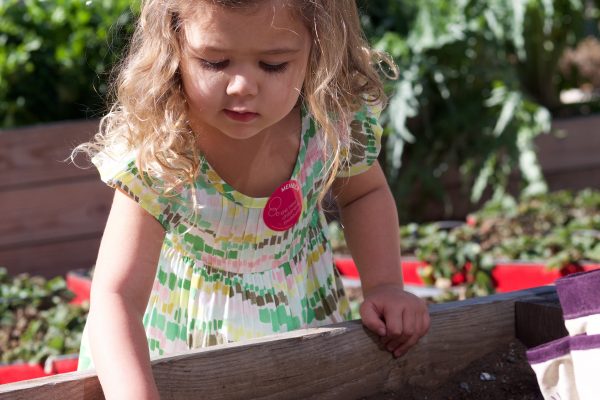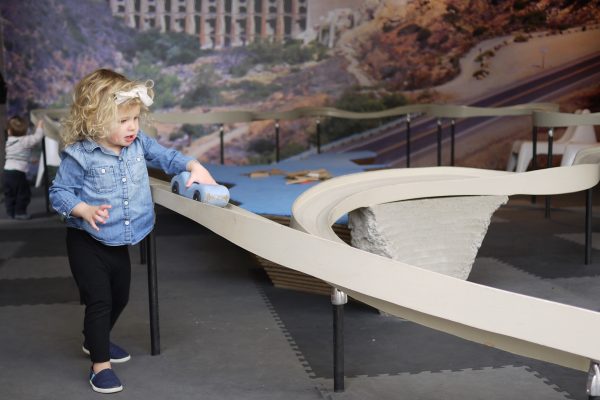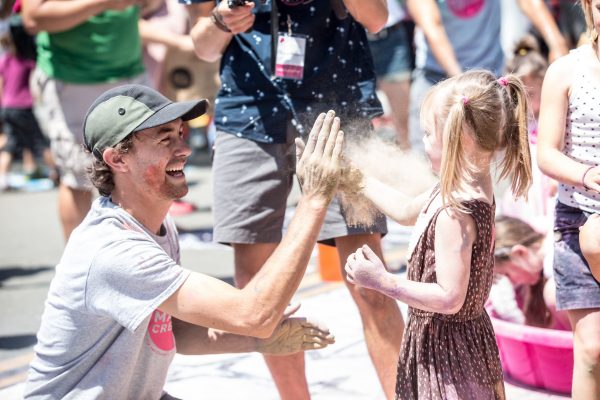do it yourself: Sun Critters
Make your own cardboard critter using recycled clear plastic or tissue paper. Then hold your critter up to the sun to see it light up! This DIY project is inspired by our Circuit Critter workshop in The Rosso Family Foundation Innovators LAB powered by Cox.
guidelines + materials
AGE: 6+ (with adult support)
TIMEFRAME: 60 min
SUPPLIES:
- Cardboard or construction paper
- Newsprint paper
- Pencil
- Clear colored plastic or tissue paper
- Glue stick
- Paper
- Scissors
- Markers
- Hole Puncher
VOCABULARY:
Negative space: The “empty” areas in an artwork.
Positive space: The “full” areas in an artwork.
Stippling: The process of drawing, painting or engraving using numerous small dots.
directions
1. Draw Your Critter. Use a pencil to sketch out your critter on paper. Remember to focus on the general shape and be sure to give yourself lots of space. Consider where you want to place the holes in your design in the next step. Think about positive (full) versus negative (empty) space.
2. Transfer Drawing to Cardboard. Once you are finished with your critter drawing, transfer the drawing onto cardboard or construction paper using a process called stippling. To stipple, use the pencil tip to punch holes along the outline of your drawing onto the cardboard. Make sure to secure your paper to the cardboard using a piece of tape.
3. Cut Out Your Critter. Once you have your cardboard outline, you can begin to cut out your critter from the cardboard. If there are any tricky parts to cut, ask a grown up to assist you with a box cutter.
4. Create Holes. Next, use a hole puncher to create different-sized holes throughout the critter cut-out. These holes will allow light to shine through when holding up your critter to the sun.
5. Add Colored Plastic Sheets or Tissue. Now it’s time to add tissue paper or colored plastic sheets to give your critter a glowing quality. Cover the holes created in step 4 with colored plastic sheets or tissue paper and attach with glue on the back of your design. Choose different colors and get creative! Option: Add additional designs to the front of your critter using a marker!
6. Make a Stand and Shine! Cut out small rectangles from the cardboard and cut a slit into one side to create a stand for your Sun Critter. Take your critter out into the sun or shine a flashlight on it and watch it glow!
History of Stained Glass Facts:
- While glass has always existed in the forms of rocks, it was “discovered” by Phoenician merchants in Syria about 500 BCE.
- The earliest glass beads date to around 3500 BCE; hollow glass pots appeared in Egypt around 1500 BCE; tablets showing instructions for making glass found in Assyria date around 650 BCE.
- Between 27 BCE and 14 CE, glassblowing was invented and was a significant achievement.
- The Romans were the first to use glass for decorative and architectural purposes around 100 CE.
- Between the 11th and 13th centuries it was discovered how to make glass sheet – during this period the art of making colored glass appeared and stained glass had its origins.
- Stained glass is a series of smaller pieces of clear and colored glass joined by lead strips.




